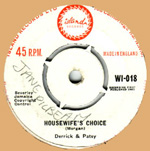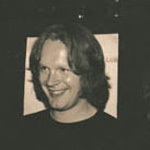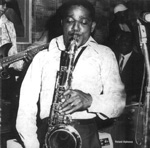Being a Mod in the 1980's

I had walked down the two flights of steps into the basement where a young black Mod called Ian Jackson was playing a record called '98c Plus Tax' and proclaiming 'Detroit! Detroit!' over the mic. As I got to the bottom of the stairs, I saw an older Mod called Eddie Piller, wearing a camel coat with a brown velvet half collar which he had just had made and felt a mixture of admiration and envy, he was talking animatedly with a few East London guys. After leaving my dark, plain crombie in the cloakroom, I moved towards the bar and dance floor. And there they were. 'The very dream of smartness' as Paul Weller once wrote. Lights moving across shimmering mohair, glinting off tiepins and cufflinks. Elegant girls with short-cropped hair and pale faces. All moving, moving, moving to...Oh the music!
The cross rhythms of RnB, the poise and elasticity of James Brown, the vocal swing of soul. Tony Parsons' novel 'Limelight Blues' talks about Hippies dancing from the waist up and Mods dancing from the waist down. So true. The Mods in the Phoenix were all shimmying, gliding, like they were on ice almost, with that quality that James Brown had in those old films, where he looked like his ankles could move in twenty different directions within a microsecond. Fingers clicked, occasionally hands clapped, all were lost in their own worlds but aware enough of others to move in and out so there were hardly any collisions. Later on the main DJ of that evening, named just Toski, laid out his magical platters, flipping through them and producing side after side of soulful jewels.
That night, I felt like I was standing within the beating heart of something. Hardly anyone in the outside world knew.

The Mod 'revival' of 1979 had petered out by the time of the above. The bands had split, some people had moved on to the scooter scene, the world was interested in other things. But some people stayed with it and by the time I became involved, it had almost ceased.
I didn't get involved with the original Mod 'revival' (although I liked The Jam, everyone did). It seemed a bit distant from what I understood was Mod. Both my parents had been Mods in the early sixties and so I had grown up with Tamla, RnB and ska records (I was probably the only kid at my school whose Mum had a copy of 'Housewife's Choice' by Derrick and Patsy on the original red and white Island label). I liked the teen energy of some of the 'revival' bands but...it didn't compare to 'Nowhere To Run'. Not much does.
The fag end of the 'revival' left a few dedicated people and within their ranks something strange and wonderful happened around 1983 time. Some of them began to take an almost fundamentalist approach to the idea of Mod clothes and music. Among the first prominent proponents was a set of individuals named the 'Camden Stylists' (as the hip know, 'stylist' was a term used by the original Mods to denote their distance from the 'tickets'). These individuals began having their suits and shirts made, paying attention to detail, from the roll of the button down collar to the covering of buttons to the stitching on the loafer. This ideal began to spread.
At the same time, the music began to change. Apart from the aforementioned Toski and Ian Jackson, the main DJs were Paul Hallam and Richard Early. Their club, 'Sneakers', took place on Sunday nights at a pub called The Bush, on Shepherd's Bush Green, old Mod territory. Inspired partly by Ady Croasdell's 6T's nights, 'Sneakers' played the real deal, Sue label soul, John Lee Hooker, Marvin, obscure stuff as long as it could move the crowd. 'Sneakers' was the Sunday evening come down from the weekend but it premiered some of what later became 'club classics'. Over the next couple of years the music played at Mod clubs encompassed, as well as the bedrock of soul and RnB, the hard bop and Hammond end of jazz, the mid sixties sounds of Latino New York and the guitar sounds that became known as 'freak beat'. As long as it could swing and take you to that place.
On that night, I was wearing a pair of trousers I'd had made. Take a second and think what that meant for a teenager at that time. I had searched out the material and taken it to a tailor and had clothes made to my exact specifications. That is an example in microcosm of what Mod was about, that level of self-definition. The material was a worsted Prince of Wales check with a subtle overlaid secondary check of red and yellow. At the time we had all been looking at pictures of the Small Faces from around '65/'66 and these pictures had them wearing such slacks. The tailor who made them was an old Jewish guy in Shoreditch (so old in fact that he retired the following year and I had to find another). This was useful given that he had made similar items for the original Mods and so requests for frog mouth pockets, covered buttons and step bottoms didn't faze him.
Like clothes, the search for old music was also essential. Before the days of seemingly limitless CD compilations and Northern Soul classics appearing in KFC ads, you had to find original records. This search would take us to many obscure places, one that comes to mind is a small flat occupied by a lone middle aged woman who had the best and most complete collection of Tamla stuff I have ever come across. There would be contacts, a number scribbled on a piece of paper, a nod, it was like being a secret agent, it added to the clandestine nature of Mod living.
The other thing that appealed to me then and even more so today was the unmediated nature of the scene. We are in an age now where the media is all-pervasive and everything is leapt upon and in the supplements before it has had a chance to develop. During that time, there were only a very few press articles about the scene, one in 'The Face' and another in 'Time Out' stand out, both pretty good representations surprisingly. The Mod scene then, like it's original early 60's precursors, existed on it's own terms and away from press interest. Clubs and fanzines were created by those on the scene without any media interest or promotion, ensuring a purity of purpose and sense of ownership. The scene never really courted interest from the media because it didn't need it. It could survive without it and it's potential to destroy.
All of us on the Mod scene of that time felt varying levels of disconnection, I think, with the prevailing mood of the times and although some of us kept our ears attuned for things outside of our group, there were some totally immersed in it and uninterested in anything else. Some of you would find this, no doubt, a bit ridiculous but in the days when all the old dinosaurs seemed to be returning and people like Michael Howard were in government, who can wonder? Ultimately it fizzled out, for some earlier than others and people moved on to other things. Things like that always do. But everyone involved in it still, I believe, keeps a part of that experience with them and it still informs how they do things now, from their clothes to their music to just the way they move through the world.

Toski had just played the final disc. It was just after
3:00 a.m. and several of us were standing around outside, admiring the scooters
parked outside and
listening to the rattle of their engines as their riders kick-started them to
life. Some of us began to wend our way towards night buses through a mainly deserted
west end, this being a time just before that part of London became a big nightclubbing
area. None of us were tired, some because of chemicals, most just because of
the joy of being in that moment. The night streets were under our feet and the
orange sodium glow lit the way.
Like all other articles of this type, I present here a Top Ten of my favourite
sounds from that time. Some have gone on to general knowledge, others remain
known only to those who were there.
1. HERBIE GOINS AND THE NIGHTIMERS - Cruisin'
2. THE QUIK - Bert's Apple Crumble
3. MR. DYNAMITE - Sh'mon
4. BROTHER JACK MCDUFF AND DAVID NEWMAN - Duffin' 'Round
5. RAY CHARLES - I Don't Need No Doctor
6. YOUNG HOLT UNLIMITED - Give It Up
7. RAY BARRETTO - Hard Hands
8. JUNIOR WELLS - (I Got A) Stomach Ache
9. ROLAND ALPHONSO - Phoenix City
10. SLIM HARPO - Shake Your Hips
© 2005 Gavin Gribbon